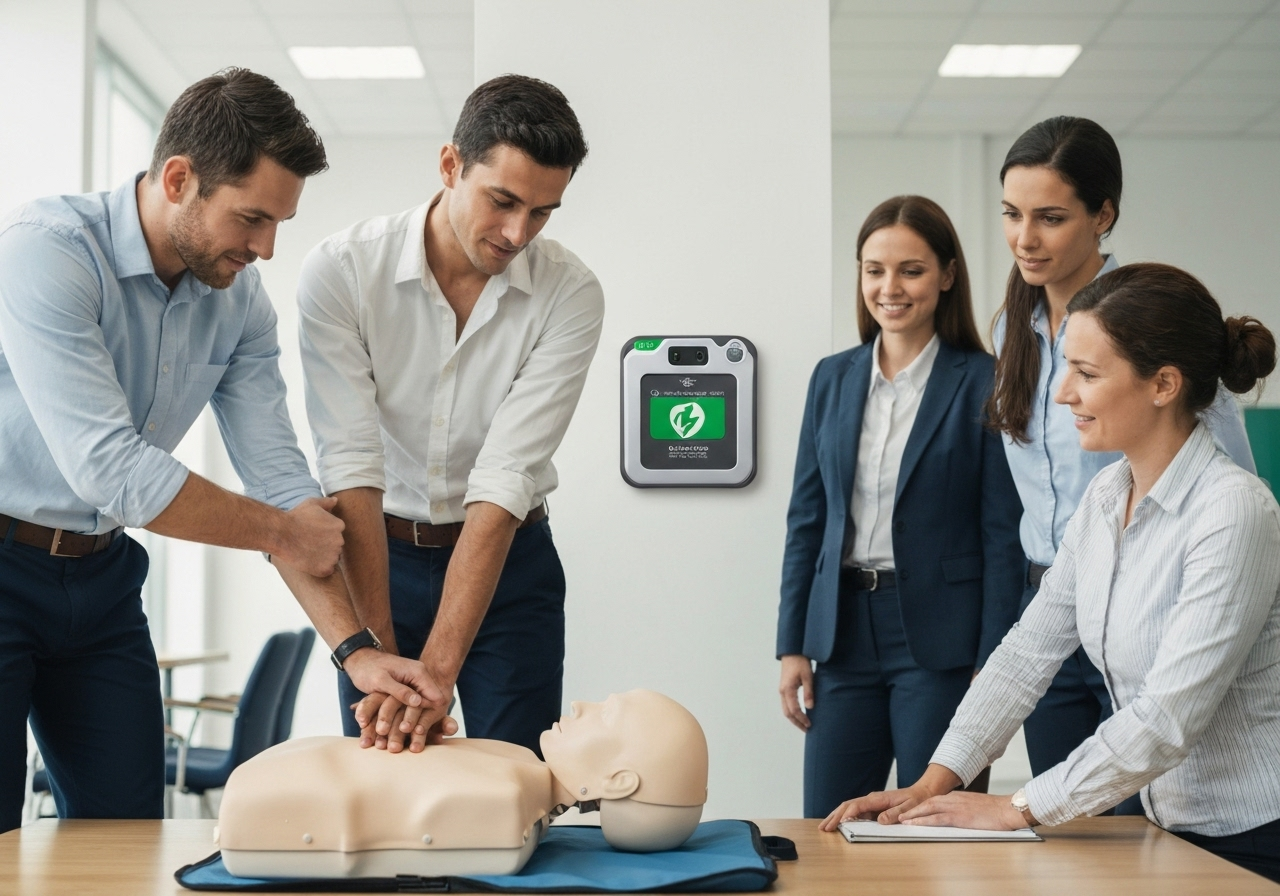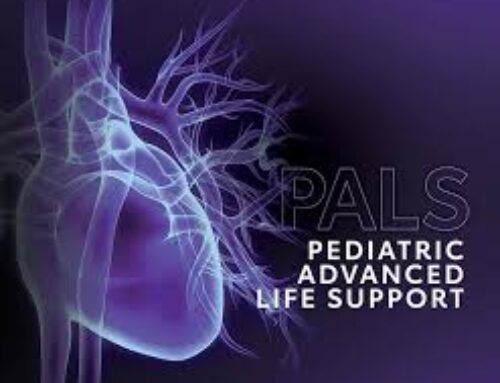The Unforeseen Reality: Why Workplace Emergencies Demand Preparedness
Workplace incidents, though unexpected, are an inherent risk in any professional setting. Even with robust safety protocols, emergencies can strike, highlighting the critical need for proactive measures. CPR Training for Businesses is not merely a compliance checkbox but a foundational investment in employee safety and organizational resilience. Immediate response in a crisis can dramatically alter outcomes, transforming potentially tragic situations into manageable incidents. This commitment to preparedness fosters a workplace where every individual feels valued and secure.
The Lifesaving Power of Immediate Response in the Workplace
Seconds can make the difference between life and death during a cardiac event or other medical emergency. When someone experiences a sudden cardiac arrest, brain damage can begin in just minutes without intervention. Cardiopulmonary Resuscitation (CPR), when administered promptly by a trained individual, can sustain vital blood flow and oxygen to the brain and other organs until professional medical help arrives. This immediate action significantly increases the chance of survival, with bystander CPR improving survival rates for out-of-hospital cardiac arrest. Equipping employees with these skills means creating a network of first responders within your organization, ready to act decisively and confidently when it matters most.
Beyond First Aid: Comprehensive CPR Training for Businesses
While basic first aid addresses minor injuries, comprehensive CPR training for businesses goes further, equipping employees with the skills to handle life-threatening emergencies. The American Heart Association (AHA) and American Red Cross offer structured programs that cover a range of critical interventions. These courses typically include instruction on proper chest compression techniques, recognizing signs of stroke and heart attack, and effective airway management. Furthermore, training often incorporates the use of Automated External Defibrillators (AEDs), crucial devices that can deliver a life-saving electrical shock to restore a normal heart rhythm. Businesses can also benefit from blended learning options, combining online modules with hands-on skills sessions, offering flexibility for busy schedules.
Key Components of Advanced Workplace Training:
- Adult, child, and infant CPR techniques
- Choking protocols for conscious and unconscious victims
- Proper usage and maintenance of AEDs (Automated External Defibrillators), which are vital tools for sudden cardiac arrest. You can find more information about AEDs here.
- Recognition of life-threatening emergencies
Customizing training to specific workplace hazards is also crucial, ensuring employees are prepared for scenarios most likely to occur in their environment. For instance, a construction site might require different emphasis than an office setting, and reputable providers like the American Red Cross can tailor courses to meet these diverse needs.
Tangible Benefits: How Businesses Gain from Investing in Employee CPR Skills
The advantages of investing in CPR training for businesses extend far beyond immediate emergency response. Companies that prioritize such training experience a ripple effect of positive outcomes:
- Enhanced Safety Culture: Demonstrates a profound commitment to employee well-being, fostering a culture where safety is paramount. This can lead to increased trust and morale among the workforce, as employees feel valued and protected by their employer.
- Increased Employee Confidence and Morale: Empowering employees with life-saving skills boosts their confidence both at work and in their personal lives. Knowing they can make a difference in an emergency alleviates stress and promotes a sense of satisfaction. Group training can also serve as a team-building exercise, strengthening collegial bonds. This sense of empowerment contributes to overall job satisfaction and loyalty.
- Reduced Response Times and Improved Outcomes: The presence of trained individuals on-site can significantly cut down the time to intervention during a medical emergency. This rapid response is critical for conditions like sudden cardiac arrest, where every minute counts. Faster intervention can lead to higher survival rates and less severe long-term consequences for the affected individual.
- Legal Compliance and Reduced Liability: Depending on the industry and location, CPR and first aid training may be a regulatory requirement. Proactively providing this training ensures compliance with OSHA and other standards, mitigating potential legal risks and liabilities for the business. Organizations should consider how workforce training programs align with these requirements.
- Positive Public Image: A company known for prioritizing the safety and well-being of its employees and community builds a strong, positive public image. This can enhance its reputation, attract top talent, and foster customer loyalty, contributing to long-term success.
Partnering for Safety: Choosing the Right Training Provider for Your Business
Selecting the right training provider is paramount to ensure high-quality and effective CPR training for businesses. Key factors to consider include:
- Accreditation and Certification: Ensure the provider is certified by recognized organizations such as the American Heart Association (AHA) or the American Red Cross. Their certifications are widely accepted and adhere to the latest resuscitation guidelines.
- Customization Options: A good provider will be able to tailor the training content to the specific risks and needs of your workplace. For example, if your business involves physical labor or specific machinery, the training should address potential injuries relevant to those operations. Many providers offer on-site training, bringing the expertise directly to your location.
- Experienced Instructors: The effectiveness of the training heavily relies on the instructors’ expertise and teaching abilities. Look for providers with certified instructors who have real-world experience and can create engaging, hands-on learning environments.
- Flexible Training Formats: Options like on-site training, blended learning (online and in-person components), or dedicated group sessions can accommodate varying employee schedules and company needs. Group training can be a cost-effective and efficient way to train multiple employees simultaneously.
- Equipment and Resources: A reputable provider will use up-to-date training equipment, including manikins with feedback devices and AED trainers, to ensure realistic practice.
Companies like CPR Works Charlotte specialize in delivering comprehensive and tailored CPR, First Aid, and AED training for businesses, ensuring that your employees receive the best possible instruction. You can explore their course descriptions to find the best fit for your team.
Sustaining Readiness: Refreshers, Recertification, and Essential Equipment
Initial CPR training for businesses is a crucial first step, but maintaining readiness requires ongoing commitment. CPR skills can diminish over time, making regular refreshers and recertification vital. Most CPR certifications are valid for two years, but studies indicate that skill retention declines significantly after just one year. Therefore, scheduling refresher courses every 6-12 months is highly recommended to keep skills sharp and confidence high. The American Red Cross emphasizes that CPR recertification courses allow individuals to refresh their memory and stay updated on the latest techniques. Additionally, ensuring that all emergency equipment, such as first aid kits and AEDs, is regularly inspected and well-maintained is equally important. This includes checking expiration dates on supplies and ensuring AED batteries are charged and pads are not expired. Having appropriate CPR and first aid training equipment is essential not only for practice but also for real-world application.
Invest in a Resilient Workplace with Expert CPR Training
Prioritizing CPR training for businesses is a strategic decision that fortifies workplace safety, boosts employee morale, and builds a resilient, prepared organization. By empowering employees with life-saving skills, businesses create an environment where individuals can act confidently and effectively during critical moments, ultimately protecting lives and minimizing the impact of emergencies. This investment underscores a company’s dedication to its most valuable asset—its people—and fosters a community of preparedness ready to face unforeseen challenges.
Ready to invest in a safer, more resilient workplace? Visit our Contact Us page to learn more about our comprehensive CPR training for businesses.






